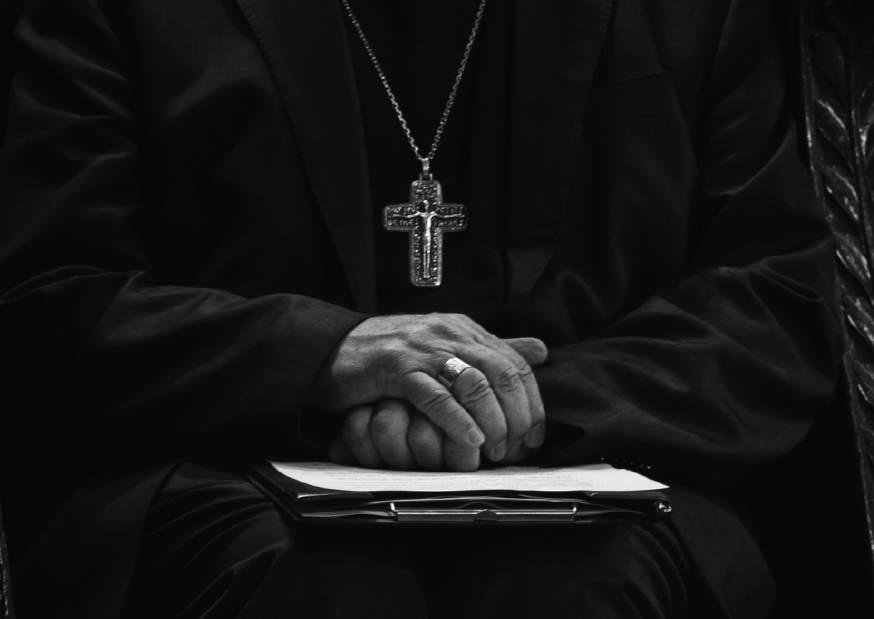|
Pennsylvania Supreme Court's blocking of clergy sex abuse report devastates victims
By Debra Erdley
The Pennsylvania Supreme Court's decision to block the release of a grand jury investigative report into clergy sexual abuse hit Mark Rozzi “like a punch in the gut.” “At first, (the decision) was very emotional and frustrating,” Rozzi said. “But then my thoughts turned to all the other victims and their families who have been hanging on by a thread. We have heard from dozens of them.” Rozzi, a state representative from Berks County, previously testified before a grand jury about his abuse at the hands of a priest 30 years ago. “The pain never goes away,” he told the Tribune-Review. Victims of clergy sexual abuse and their attorneys were stunned last week at news that the report would not be made public. The grand jury investigation examined decades of allegations of abuse and cover-ups in six Catholic dioceses across the state, including Pittsburgh and Greensburg. “They're hurt, and a lot of them will say to me, ‘Mark, this is what they have done to me from day one. When I finally was able to talk about it, they hired an investigator to silence me,' ” Rozzi said of other victims. Pennsylvania Attorney General Josh Shapiro last month said he planned to make the panel's findings public by the end of June. With all six dioceses on record supporting the release of the document, the stage appeared set for its publication. But Wednesday, the Supreme Court ordered the 800-plus-page report remain sealed, even though it was given to diocesan officials in Greensburg, Pittsburgh, Erie, Harrisburg, Allentown and Scranton last month. “It's disappointing,” said Altoona lawyer Richard Serbin. Serbin, who identified 106 suspected predator priests for the Attorney General's investigators, set the stage for many of the state's early laws involving child sexual abuse when he filed suit against the Altoona-Johnstown Catholic Diocese 31 years ago. The suit established Serbin as a victims' advocate. He said he went on to represent nearly 300 victims of clergy sexual abuse over the next 30 years. “I've never heard of this. But when it comes to the Catholic Church, a lot of things have taken place that under the ordinary course of the judiciary or investigative process would not occur,” Serbin said. The high court's order blocking the release of the secret proceedings does not say why the court acted or when or if the report will be published. The sweeping probe, believed to be one of the most exhaustive in the United States, has yielded only two criminal cases to date — one each against priests who served in the Erie and Greensburg dioceses. But many believe the grand jury's report will unveil a history of abuse and cover-ups spanning decades. An effort earlier this month to delay the release of the report failed. The Supreme Court weighed in on the issue after grand jury presiding Judge Norman A. Krumenacker III denied requests from parties who were named in the report, but not indicted, seeking to question individuals who testified against them. A half-dozen lawyers from Pittsburgh, Harrisburg and Philadelphia were notified of Krumenacker's decision, but it's unclear who they represented. In addition to the dioceses themselves, a number of individuals could have challenged the release of the report, said Duquesne University law professor Bruce Ledewitz. “Anybody named would have standing to challenge it. As a matter of fact, let's say they redacted things so as to not mention people by name. Then, even if you felt you would be identified, you'd have standing to challenge it,” Ledewitz said. “I'm not defending the layer on layer of secrecy. To a certain extent, this is Josh Shapiro's fault. He could have conducted the investigation out of his office, but then he wouldn't have had subpoena power. So he went to the courts. And he who lives by judicial power dies by judicial power,” Ledewitz said. It's difficult for the public to challenge such secrecy, said Melissa Melewsky, media law counsel for the Pennsylvania News Media Association. “There is no accountability here. There is no good cause shown on the record, and that's what the public needs to file an appeal,” she said. “It is important for the court to be clear with the public about why access is being withheld and how long it will be withheld.” Although parishes across the state struggle with church consolidations and school closings, the Catholic Church, which counts 3.2 million members in 962 parishes across Pennsylvania, is a powerful presence in Harrisburg, where a stable of influential lobbyists represent its interests. Tim Lennon, president of SNAP , a national survivors network of clergy abuse victims, said he was sickened to learn of the state Supreme Court's decision. Back in Altoona, Serbin agreed. He said he received anonymous phone calls, letters and death threats when he first sued against a predator priest in 1987. He still receives calls from victims. “Not all of them want to file a claim. Some of them just want to tell someone. I've had elderly men contact me just to finally tell someone,” Serbin said. Previous grand juries detailed lengthy histories of sexual abuse and cover-ups in the Philadelphia and Altoona-Johnstown dioceses. Indeed, a statewide victims' hot line established in the wake of the 2016 grand jury report on the Altoona-Johnstown Diocese prompted the current grand jury probe. Shapiro, whose jurors heard heart-wrenching testimony from victim after victim over the past two years, vowed to make their findings public. “My legal team and I will continue fighting tirelessly to make sure the victims of this abuse are able to tell their stories and the findings of this investigation are made public to the people of Pennsylvania,” he said. Contact: derdley@tribweb.com
|
.
Any original material on these pages is copyright © BishopAccountability.org 2004. Reproduce freely with attribution.
